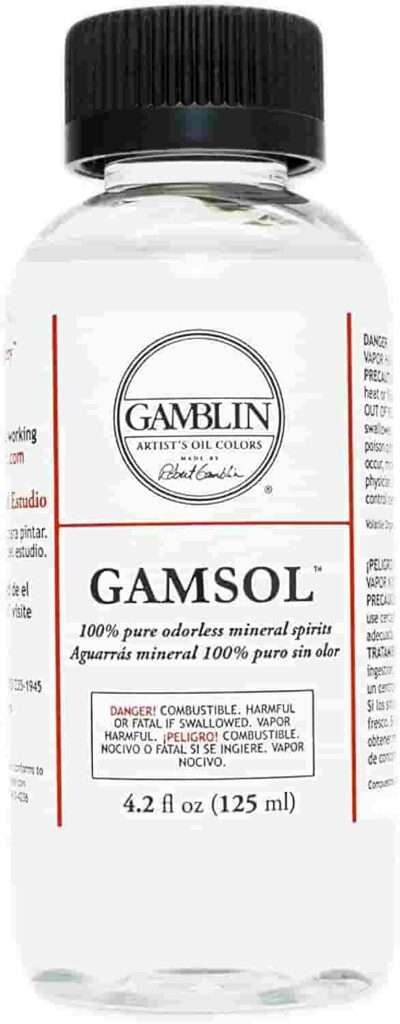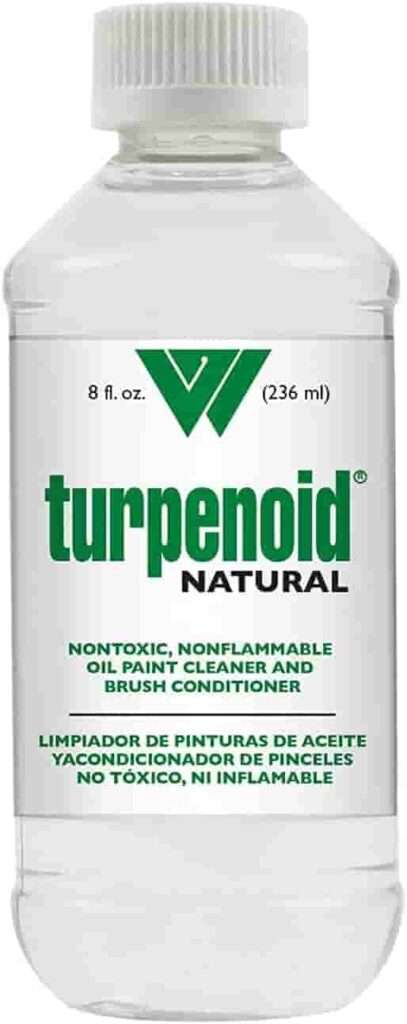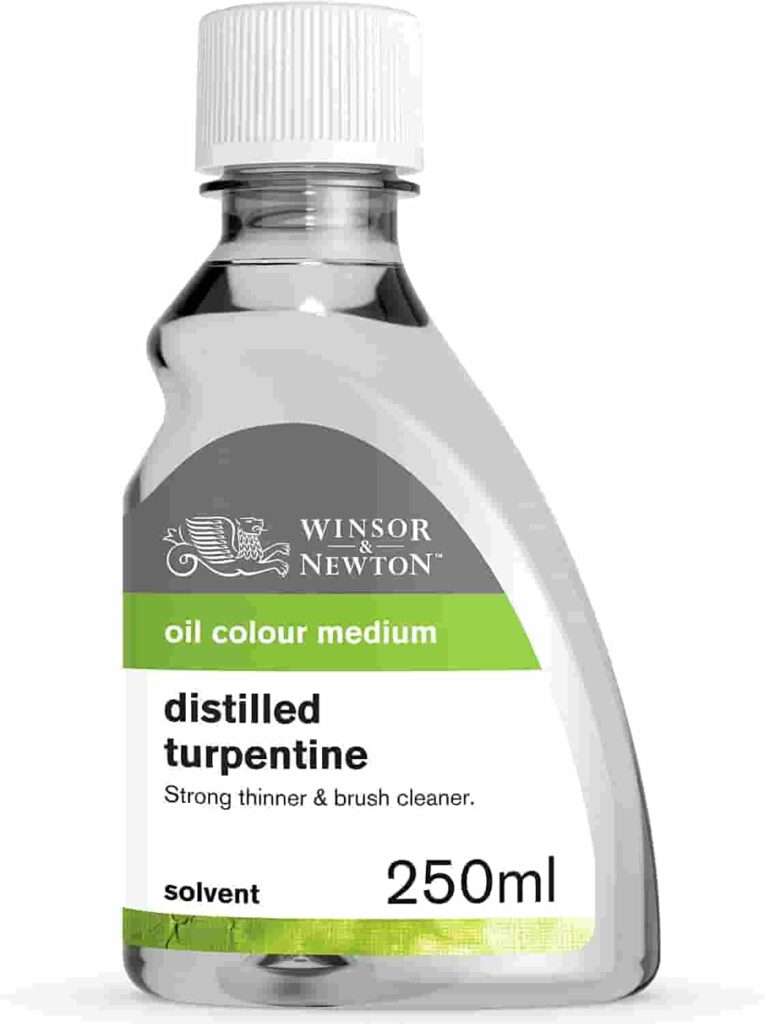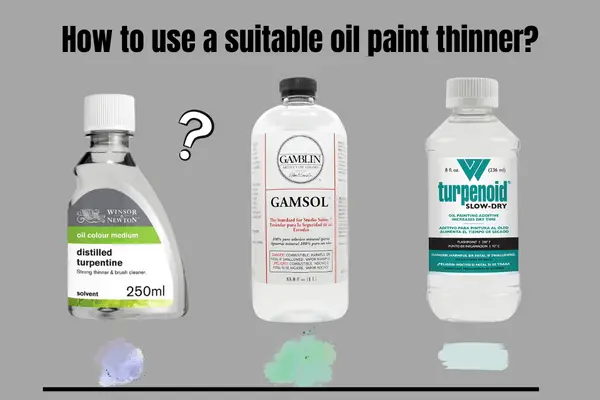Oil paints come in a gel-like form. To make them useable, we need some kind of material so that a little amount of paint can be expanded according to needs. Oil paint thinners are probably toxic materials used for thinning purposes. They come in different names like Gamsol, terpenoid, turpentine, mineral paint thinners, etc.
Table of Contents
- What are the benefits of paint thinner?
- Picking a suitable oil paint thinner for use – 3 top thinners
- 1. Gamsol
- 2. Turpeniod
- 3. Distilled Turpentine
- FAQs
- Conclusion
What are the benefits of paint thinner?
Oil paint thinners not just thin paint but also speeds up the drying process. They can also be used as cleaners. You can clean your paintbrushes and dusty workplace by using them. Instead of oil paints, they also work well to thin varnishes and enamels.
“Thinning of oil paint means to break down the paint particles to lower the viscosity so that they can easily provide glossy flow on the canvas“
Picking a suitable oil paint thinner for use – 3 top thinners
Paint thinners come in different varieties with different names in the market. All have the same purpose of working with a different style. Some contain so much toxic smell and some do not. Some work perfectly and some do not. Picking a suitable type is very important according to your painting style and comfort.
1. Gamsol

Gamsol is a good solvent for thinning oil paints. It is a non-toxic and odorless paint thinner and cleaner. It is the most popular choice for oil paints. It is a form of petroleum in a distillate form. It has been recognized as the safest and cleanest paint thinner available for oil paint.
Gamsol is a modern solvent for oil paint thinning because turpentine is very harmful to the body. It also evaporates like other solvents. It is not so harmful but it is. You don’t have to take any risks with your health. So, safety must be first.
Pros
- Safest as compared to other thinners
- Non-toxic
- Odorless
- Good quality
- Promotes drying time
Cons
- Most expensive
- Not a good cleaner
Use
Gamsol contains vapors that are harmful if they come in contact with the nose or mouth. To avoid this risk, you must have a well-ventilated room which will increase the area allowing vapors to spread. You can also turn the fan ON when you are in the room and using Gamsol. If there is a window in the room, you can open it to create a path for fresh air.
To use it, just pour your paint on the palate or any surface. Dip your brush in Gamsol liquid and then mix it in paint to get the needed amount of accuracy. Make sure to close the lid of the container to avoid turning it into vapors that can go in your nose.
2. Turpeniod

Turpenoid oil is the same as Gamsol oil in working and benefits. It is also odorless and refined from a petroleum mixture which is safe from all harmful aromatics. It is also non -toxic and there is a plus point that it evaporates so much slower. All the oil paint thinners use for the same purpose. So the working and the precautionary measures are the same as Gamsol. You have to keep a safe environment for yourself by turning the fan on and opening the window when you are working with Turpenoid oil. In price comparison, it is cheaper than Gamsol.
Pros
- Less evaporation time
- Cheapest
- Can be substituted with other mediums
- Odorless
- A small amount is enough
Cons
- Not work as effectively as gamsol
3. Distilled Turpentine

distilled turpentine is actually a solvent which mainly taken from trees like pine. Oil painting distilled turpentine is the purest form of turpentine which is recognized as safer and more effective as compared to the older ones. It has the same consistency as water. It is also a traditional solvent that has been used by artists to dilute the paint. Due to this tradition, many artists prefer using turpentine.
Use
To use turpentine, take a small amount in a jar or a bowl. You can even use the same bowl to wash brushes or pallet knives from turpentine. Put out your paint on a palette. The consistency of the original paint is so much that you cannot even draw a painting with it. You will also use a whole tube in a single use if you use paint without the thinner. Now, dip your brush inside the liquid in the jar. Always pull out an extra amount of turpentine from the tips of the brushes by pressing it over the liquid jar. Now, dip the wet brush in paint and stir it to mix paint and thinner well until you get the desired consistency. Add more liquid if needed.
Make sure to turn the fan on to protect yourself from the hazardous smell. No doubt, distilled form is less harmful but its high potency of it could be dangerous.
Pros
- Good for oil paints
- Good cleaner
- Traditional
- Old painting cleaner
Cons
- Strong smell
- Could be harmful
FAQs
What is the difference between turpentine and paint thinner for use in oil painting?
As mentioned above, turpentine contains toxicity and a strong smell but other paint thinners don’t. It evaporates at a faster rate which makes it more toxic. Turpentine also promotes drying time and it is a good cleaner but other paint thinners dry slowly like gamsol. You can clean your paint brushes and even other things like dusty surfaces with turpentine but thinners are not really good in this process.
What can I use to substitute oil paint thinner?
There are different forms of thinners. They are different from mediums. They just use it to create a good consistency of paint. You can substitute mediums but you have to be careful because not every kind of thinner is suitable to be substituted with every medium. For example, you can substitute turpenoid oil with linseed oil.
What kind of paint does thinner work the best on oil paint?
Gamsol is the best form of oil paint thinner because it is harmless and effective. But it is expensive. Its working is far away better than others.
Do I need paint thinner for oil paint?
Yes, you need it because the viscosity of paints coming from the market is greater than the desirable amounts. We cannot use water so we use paint thinners which don’t affect the pigments and give us the same results.
Is it bad to work with an artist who paints thinner with your bare hands?
No one will say it is bad because it is your own space and your own materials. If you are a professional then you are going to do so with bare hands and most artists do so with bare hands. If you want extra safety then you can practice gloves only when using harmful solvents.
Conclusion
A proper amount of viscosity of paint is so much important in oil paintings. To maintain this perfection, pain thinners are available in the market. They are in so many forms but the most popular ones are the most used ones. Prefer those thinners which are used and trusted by artists. Oil painting is an art that is full of mistakes. You may have to correct some points so many points to achieve perfection in a painting. That’s why we prefer the use of paint thinners.
Learn about linseed oil and if you have any additional questions, please let us know. Thanks!
